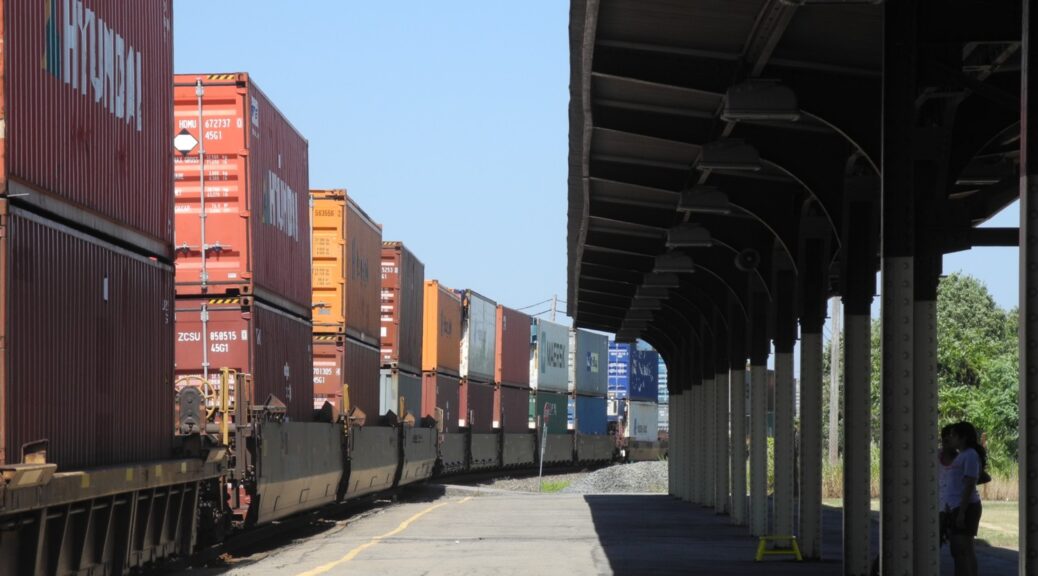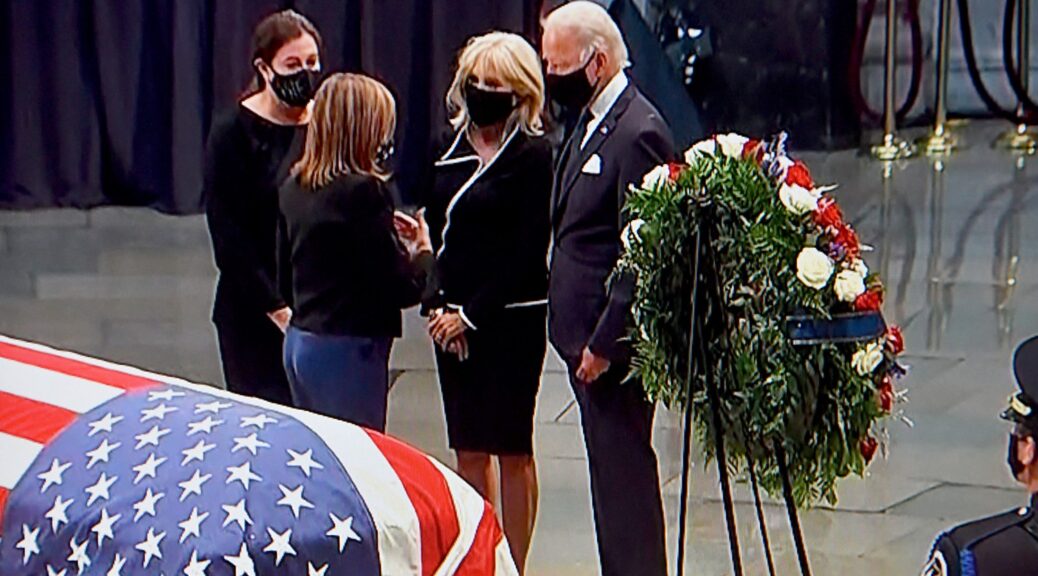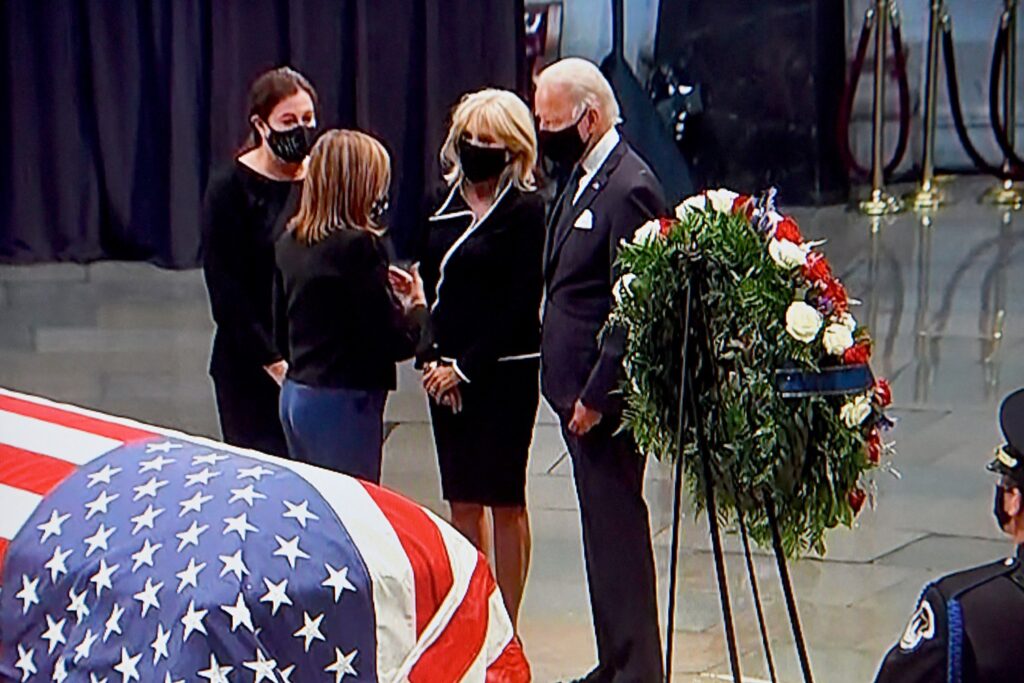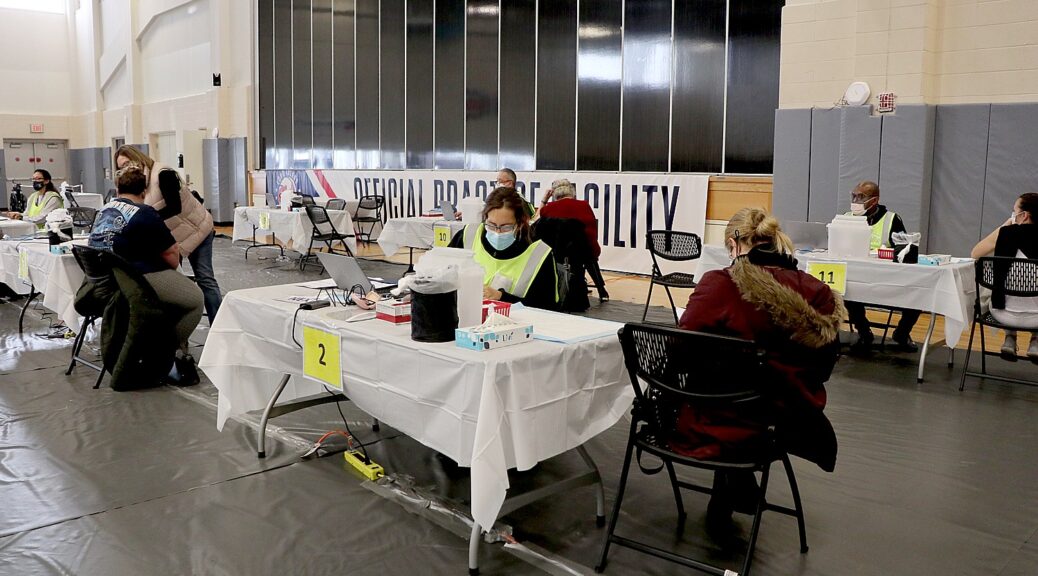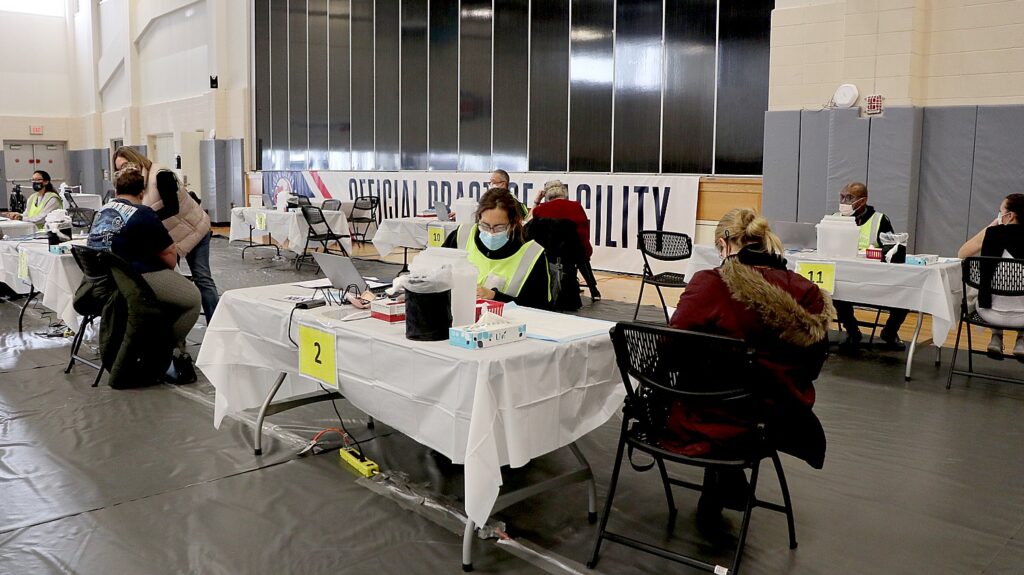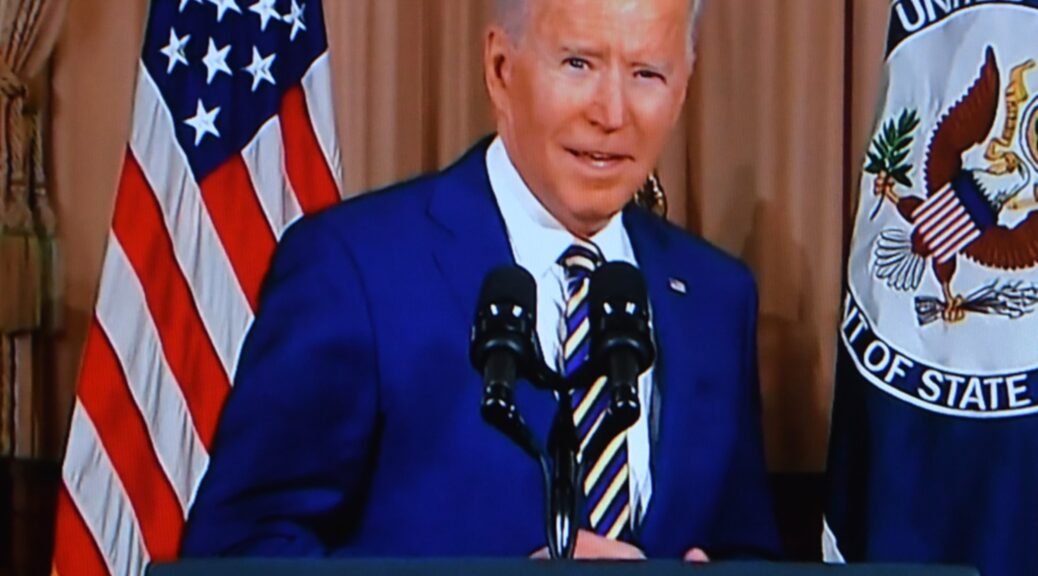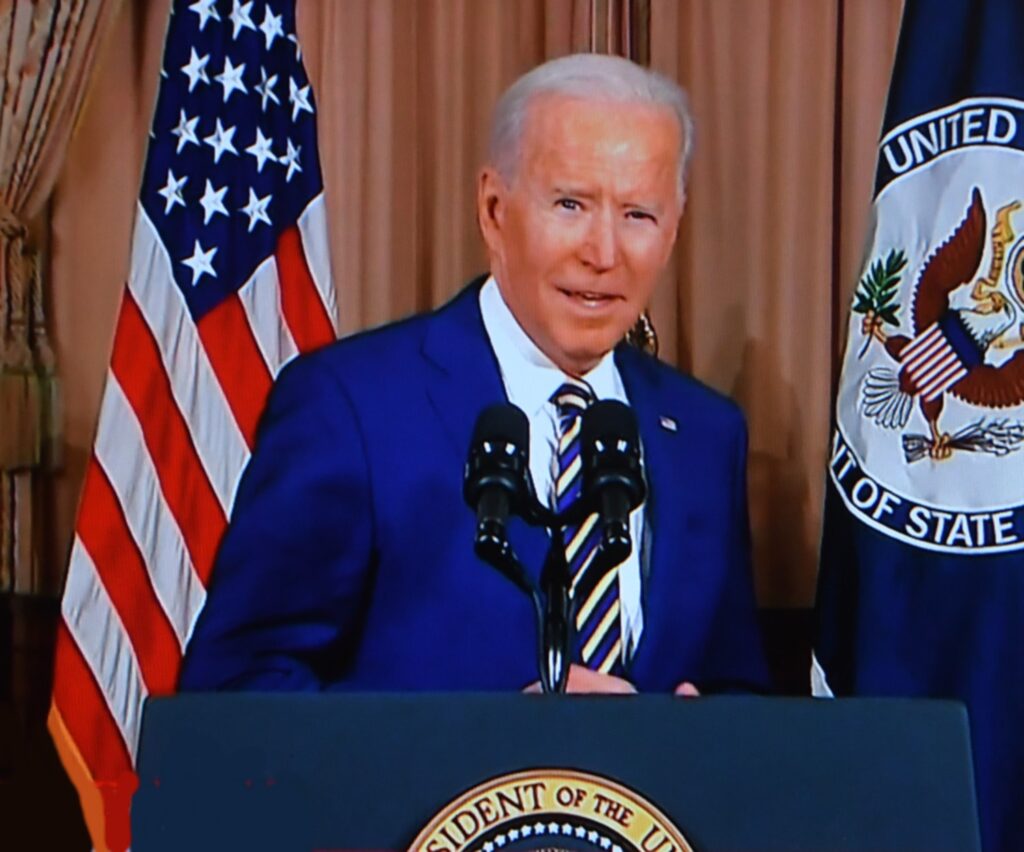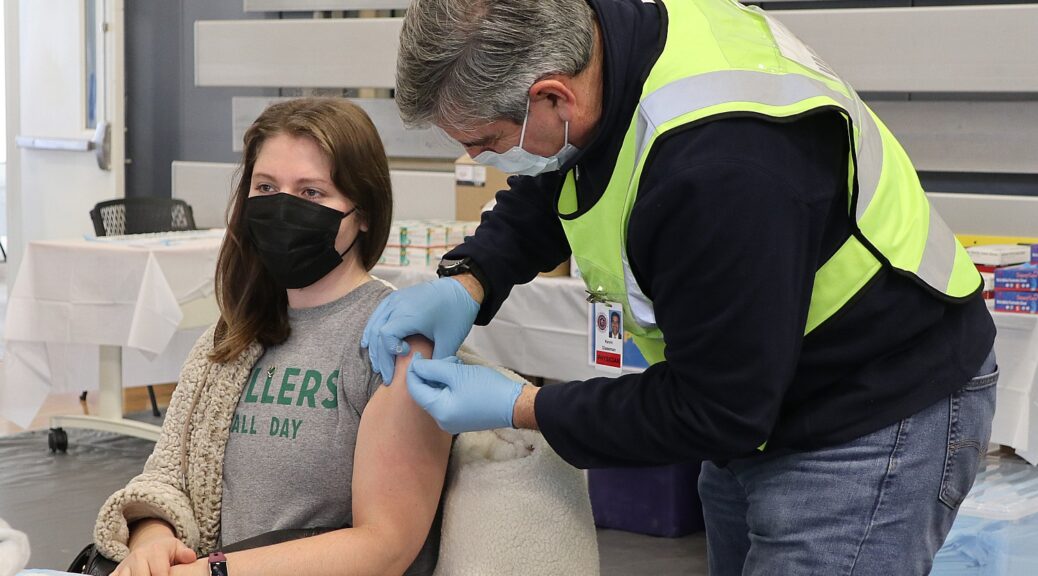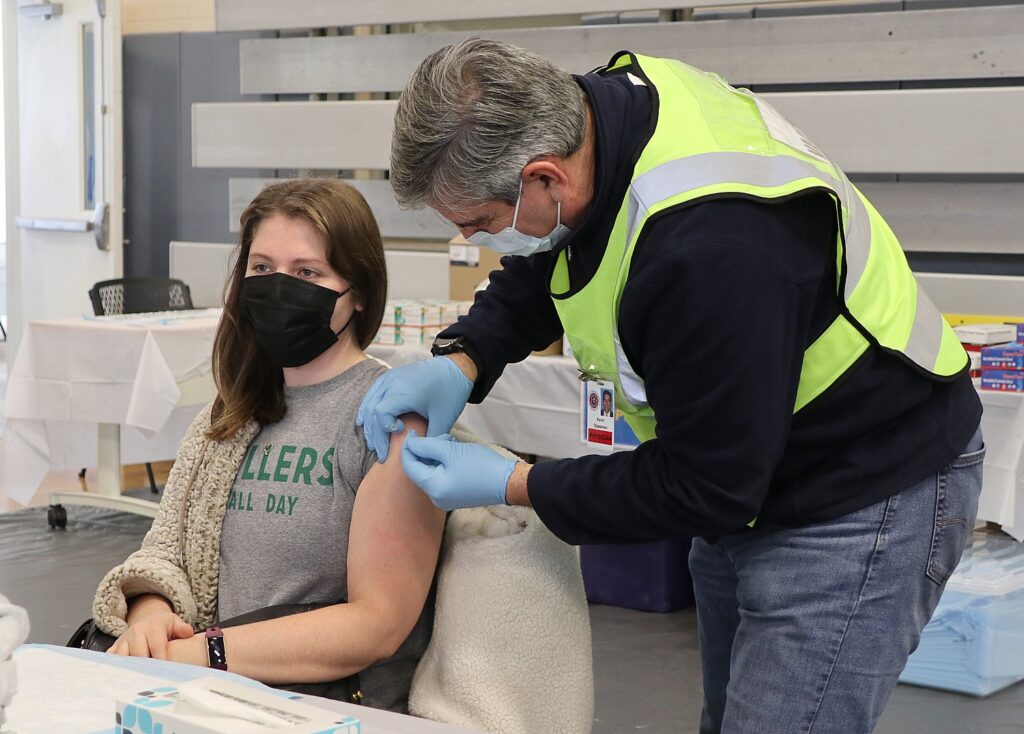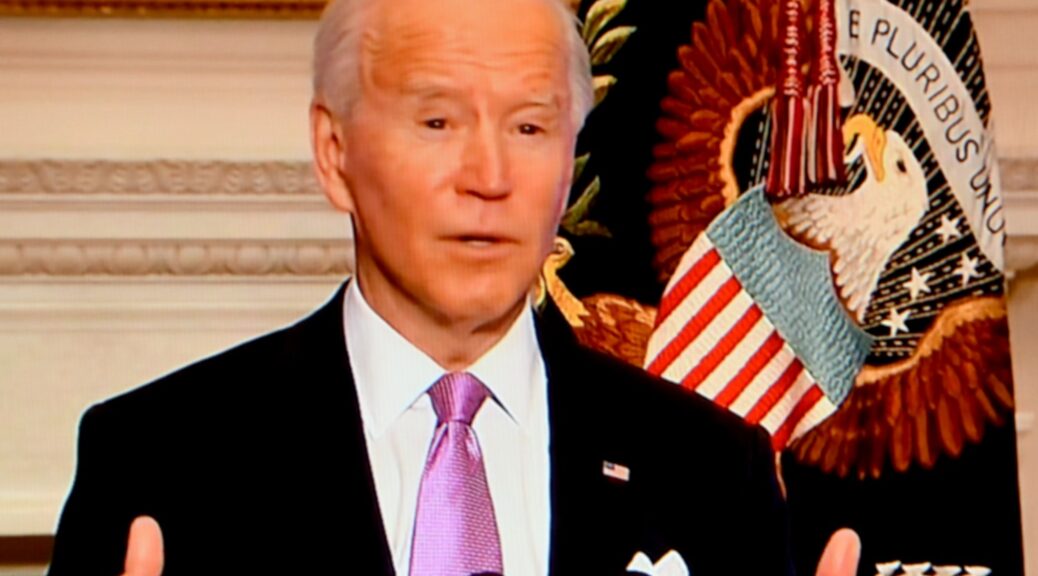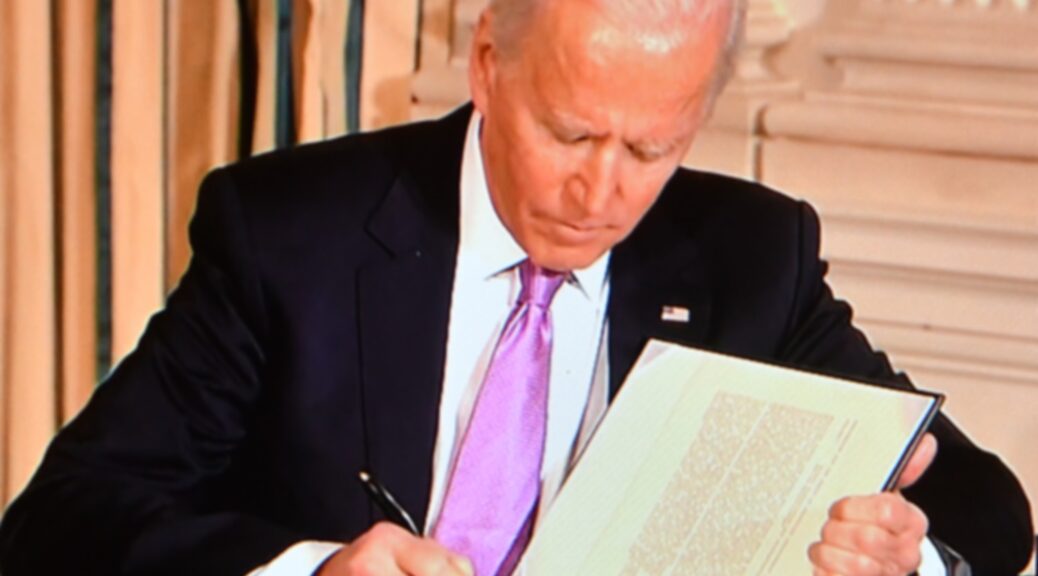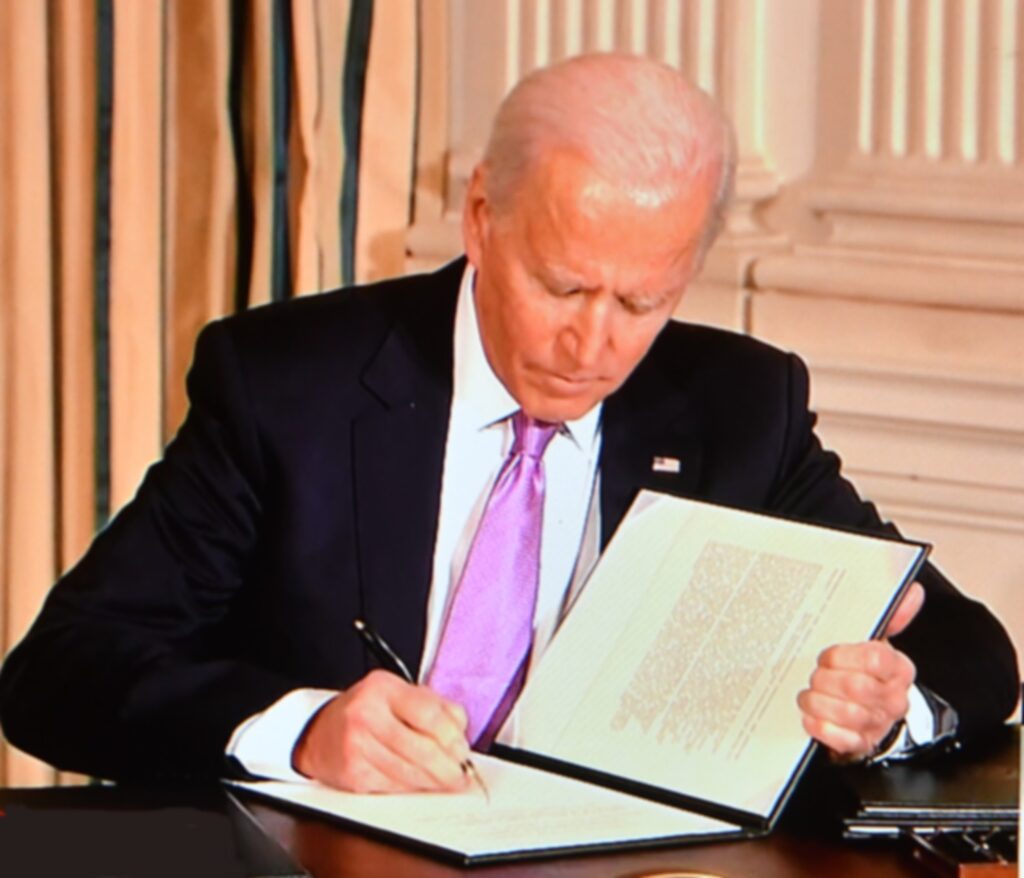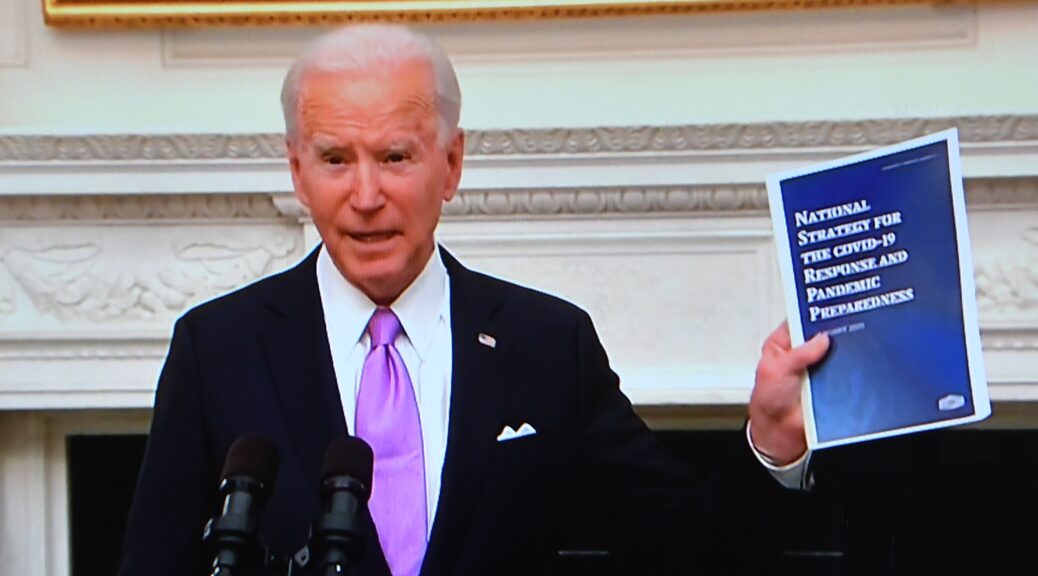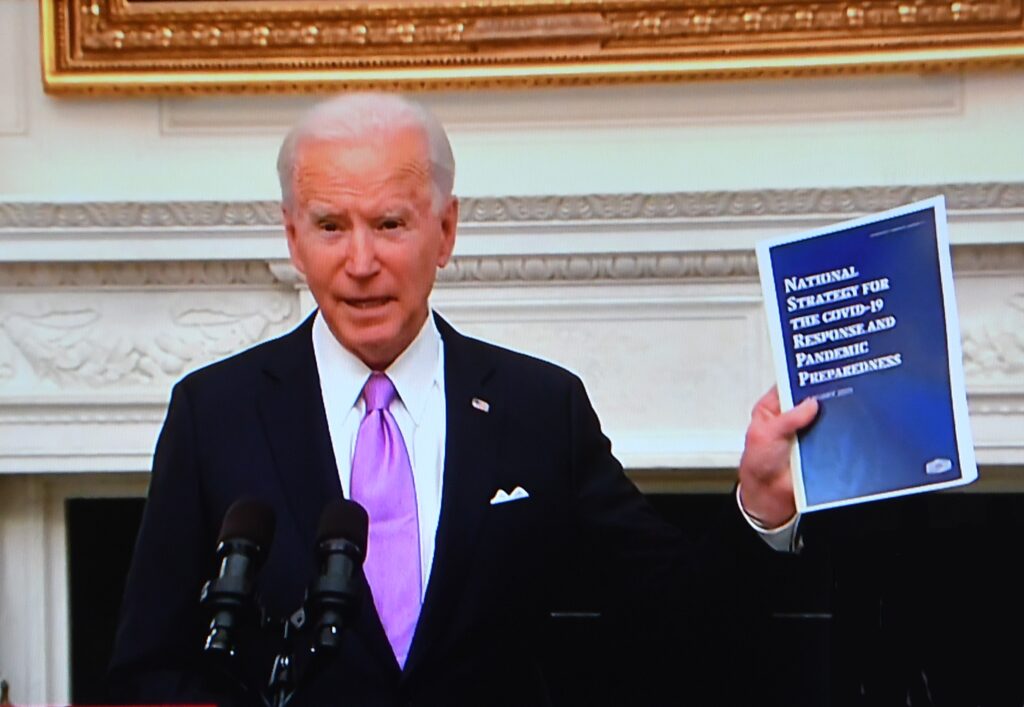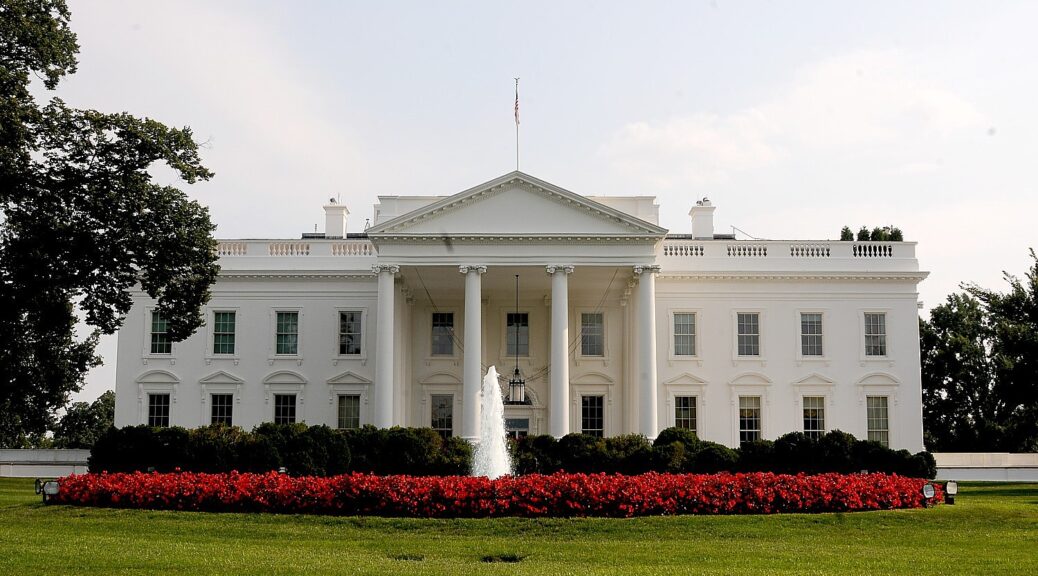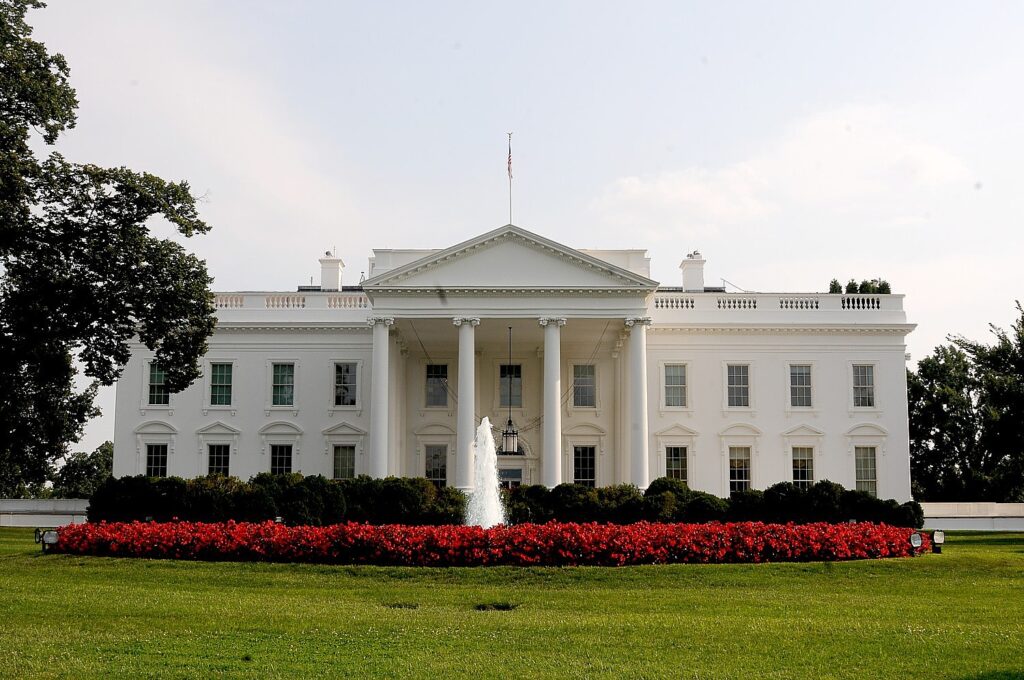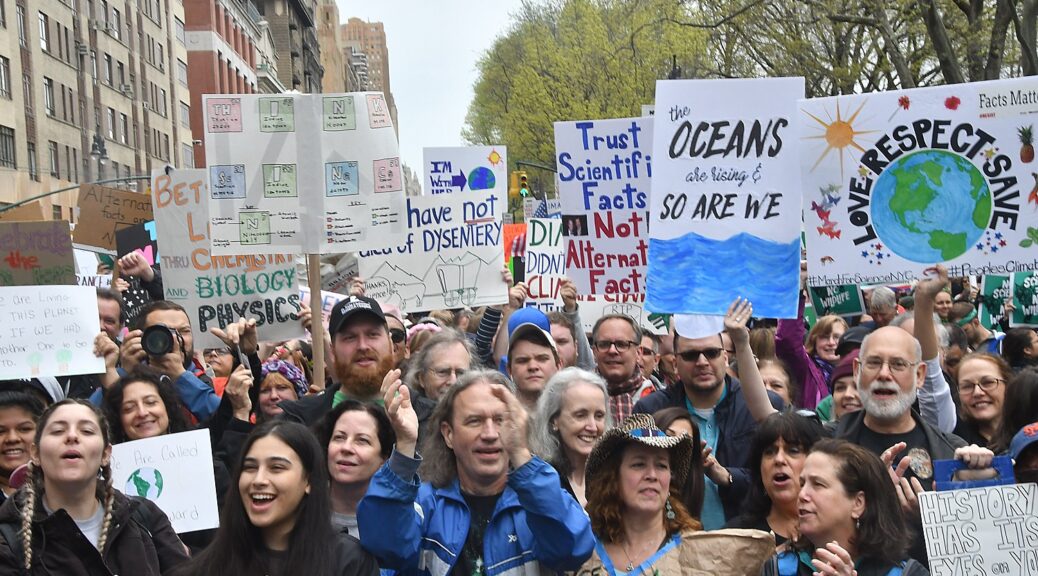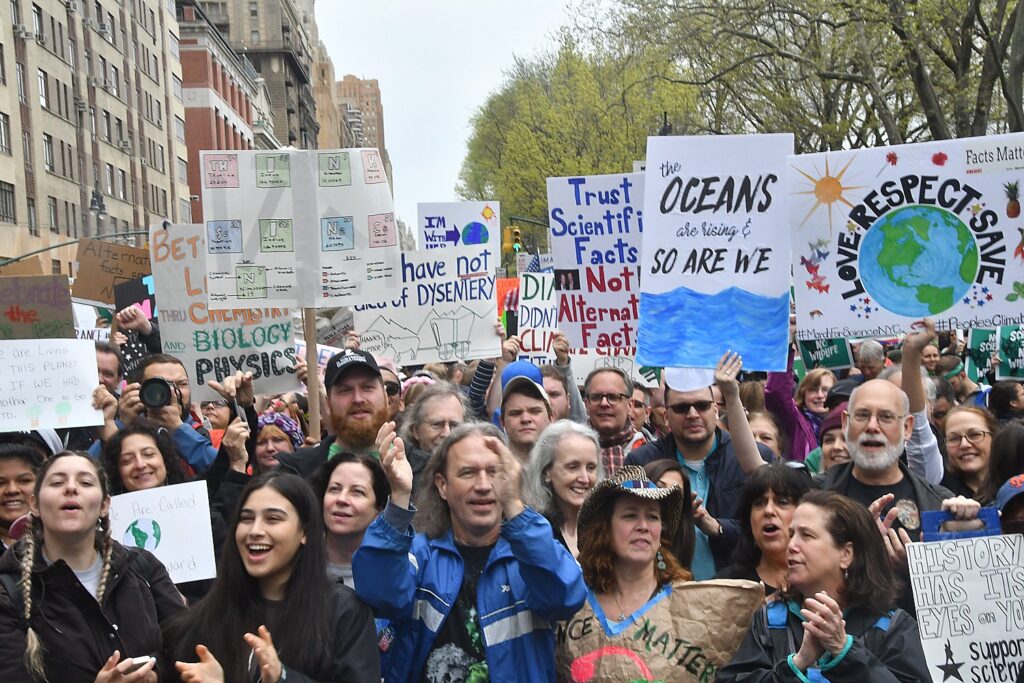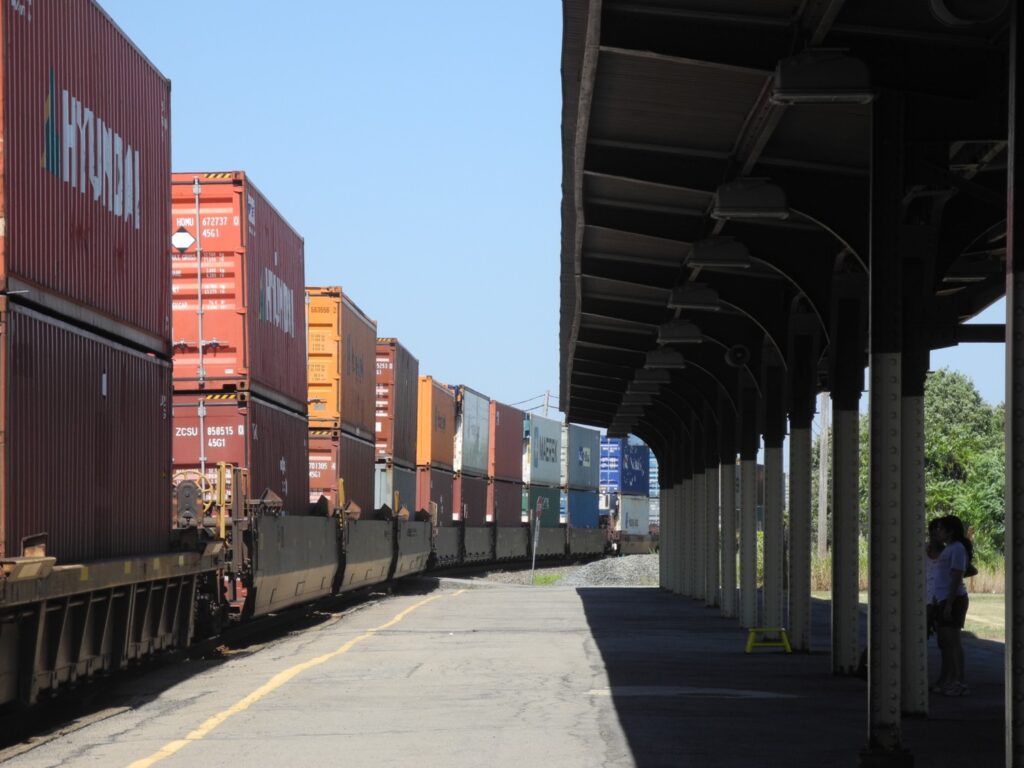
President Joe Biden provided the rationale for his American Jobs Plan in remarks on April 7, justifying the $2 trillion plan as a “once-in-a-generation investment in America unlike anything we’ve done since we built the Interstate Highway System and won the Space Race decades ago.” While saying he was willing to hear other ideas and compromise on such things as raising the corporate tax rate to 28% (still lower than 35% rate up until 2017), doing nothing is “not an option.” Here is an edited transcript of his remarks:
Last weekend, in Pittsburgh, Pennsylvania, I announced my plan to rebuild what I refer to as the “backbone of America” through the American Jobs Plan.
It’s not a plan that tinkers around the edges; it’s a once-in-a-generation investment in America unlike anything we’ve done since we built the Interstate Highway System and won the Space Race decades ago.
It’s the single largest investment in American jobs since World War Two, and it’s a plan that puts millions of Americans to work to fix what’s broken in our country: tens of thousands of miles of roads and highways, thousands of bridges in desperate need of repair.
But it also is a blueprint for infrastructure needed for tomorrow — not just yesterday; tomorrow — for American jobs, for American competitiveness.
Last week, I said that once Congress is back from recess, I’d get to work right away because we have no time to lose. So here we are.
Democrats, Republicans will have ideas about what they like and what they don’t like about our plan. That’s — that’s a good thing. That’s the American way. That’s the way democracy works. Debate is welcome. Compromise is inevitable. Changes are certain.
In the next few weeks, the Vice President and I will be meeting with Republicans and Democrats to hear from everyone. And we’ll be listening. We’ll be open to good ideas and good-faith negotiations.
But here’s what we won’t be open to: We will not be open to doing nothing. Inaction simply is not an option.
Now, since I announced this plan, I’ve heard from my Republican friends say that it’s — many of them say it’s too big. They say, “Why not focus on traditional infrastructure, fix what we’ve already got — the roads and the highways that exist and the bridges?”
I’m happy to have that debate. But I’d like to tell you my view. We are America. We don’t just fix for today; we build for tomorrow.
Two hundred years ago, trains weren’t “traditional” infrastructure either until America made a choice to lay down tracks across the country. Highways weren’t “traditional” infrastructure until we allowed ourselves to imagine that roads could connect our nation across state lines.
The idea of infrastructure has always evolved to meet the aspirations of the American people and their needs, and it’s evolving again today.
We need to start seeing infrastructures through its effect on the lives of working people in America. What is the foundation today that they need to carve out their place in the middle class to make it — to live, to go to work, to raise their families with dignity, to ensure that good jobs will be there for their kids, no matter who they are or what ZIP Code they live in?
That’s what infrastructure means in the 21st century. It still depends on roads and bridges, ports and airports, rail and mass transit, but it also depends on having reliable, high-speed Internet in every home. Because today’s high-speed Internet is infrastructure.
It depends on the electric grid — a grid that won’t collapse in a winter storm or be compromised by hackers at home or abroad. It depends on investing in “Made in America” goods from every American community, including those that have historically been left out — Black, Latino, Asian American, Native Americans, rural communities.
Talk to folks around the country about what really makes up the foundation of a good economy. Ask a teacher or a childcare worker if having clean drinking water — non-contaminated drinking water in our schools, in our childcare centers is part of that foundation — when we know that the lead in our pipes slows a child’s development when they drink that water.
Ask the entrepreneur whose small business was destroyed by the second 100-year flood in the last 10 years in Iowa — or wildfires in the West that burned 5 million acres last year, an area roughly the size of the entire state of New Jersey. More fires than ever. Or the devastating damage — seeing more frequent and more intense hurricanes and storms on the East and Gulf Coasts.
Ask all those farmers and small-business owners and homeowners whether investing in clean energy to fight the effects of climate change is part of infrastructure.
Ask folks in rural America, where more than 35 percent of the people lack a reliable, high-speed Internet, limiting their ability to conduct business or engage in remote learning for their schools. Ask them whether investing in Internet access will lead to better jobs in town, new markets for farmers, and better opportunities for their kids.
And I’m serious about this. Ask the moms and dads in the “sandwich generation” — the folks carrying enormous personal and financial strains trying to raise their children and care for their parents — their elderly parents or members of their families with a disability. Ask them what sort of infrastructure they need to build a little better life, to be able to breathe a little bit.
It’s expanded services for seniors. It’s homecare workers, who go in and cook their meal, help them get around and live independently in their home, allowing them to stay in their homes — and I might add, saving Medicaid hundreds of millions of dollars in the process.
It’s better wages and benefits and opportunities for caregivers, who are disproportionately women, women of color, and immigrants. Or ask our wounded warriors and military families.
To my Republican colleagues in Congress, shouldn’t we modernize VA hospitals, update them? Many of them are more than 50 years old.
How about the estimated 450,000 post-9/11 veterans with post-traumatic stress disorder, who, when they make that emergency call — or their husband, wife, son, daughter makes that call to the VA hospital — “Dad needs help, we have to bring him in.” And they hear, “You have to wait. We don’t have room now. Come back. Call me back in 8 days, 10 days, 12 days.”
Look at more suicides in the military than people getting shot. Is it really your position, my friends, that our veterans don’t deserve the most modern facilities? We could catch that cancer diagnosis quicker, with access to better roads, cleaner water, high-speed Internet that delivers information faster and more of it.
Above all, infrastructure is about meeting the needs of a nation and putting Americans to work and being able to do and get paid for doing — having good jobs. Plumbers and pipefitters replacing those, literally, thousands of miles of — of dangerous lead pipes. They’re still out there.
Everybody remembers what happened in Flint. There’s hundreds of Flints all across America. How many of you know, when you send your child to school, the fountain they’re drinking out of is not fed by a lead pipe? How many of you know the school your child is in still has asbestos in the walls and lacks the ventilation? Is that not infrastructure?
Line workers and electricians laying transmission lines for a modern grid, providing over 500,000 charging stations on the highways we are going to build to accommodate electric vehicles so we can own the future.
Construction workers and engineers building modern hospital — modern hospitals and homes for American families. Healthcare workers, steelworkers, folks who work in the cutting-edge labs. Nearly 90 percent of the infrastructure jobs created by our American Jobs Plan can be filled by people who don’t have a college degree. Seventy-five percent don’t need an associate’s degree.
As I said last week, this is a blue-collar blueprint for increasing opportunity for the American people. It also includes the biggest investment in non-defense research and development on record.
I promise you — this is not part of my speech — but I promise you, you’re all going to be reporting over the next six to eight months how China and the rest of the world is racing ahead of us in the investments they have in the future, attempting to own the future. The technology, quantum computing, investing significant amounts of money and dealing with cancer and Alzheimer’s — that’s the infrastructure of a nation.
There’s a new book out about how our — we’ve fallen behind. America is no longer the leader of the world because we’re not investing. It used to be we invested almost 2.7 percent of our GDP in infrastructure. Now it’s about 0.7 percent. When we were investing in it, we were the leader in the world.
I don’t know why we don’t get this. One of the only — a few major economies in the world whose public investment in research and development has declined as a percentage of GDP in the last 25 years — declined: the United States of America — that led the world.
Why does this matter? Investing in research and development help lead to lithium batteries, LED technology, the Internet itself. It helped lead to vaccine breakthroughs that are helping us beat COVID-19; to the Human Genome Project, which has led to breakthroughs in how we understand and fight cancer and other diseases.
Government — meaning, the taxpayers — funded this research. Government.
When we stop investing in research, we stop investing in the jobs of the future, and we give up leading the world.And when we do invest in research, what we’re really doing is raising the bar on what we can imagine.
Imagine a world where you and your family can travel coast to coast without a single tank of gas, or in a high-speed train, close to as fast as you can go across the country in a plane.
Imagine your children growing up to work in innovation, good-paying jobs in fields that haven’t even been invented yet, like the parents of every computer programmer, every graphic designer, every renewable energy worker once did — imagined.
We invest today so that these jobs will be here in America tomorrow, so America can lead the world that is — as it’s historically done.
That’s why I brought back scientists into the White House. We need to think.
Look, do we think the rest of world is waiting around? “We’re not going to make those kinds of investments,” the rest of the world is saying. Take a look. Do you think China is waiting around to invest in this digital infrastructure or in research and development? I promise you, they are not waiting, but they’re counting on American democracy to be too slow, too limited, and too divided to keep pace.
You’ve heard me say it before: I think this generation is going to be marked by the competition between democracies and autocracies, because the world is changing so rapidly. The autocrats are betting on democracy not being able to generate the kind of unity needed to make decisions to get in that race. We can’t afford to prove them right. We have to show the world — and much more importantly, we have to show ourselves — that democracy works; that we can come together on the big things. It’s the United States of America for God’s sake.
Of course, building the infrastructure of tomorrow requires major investments today.
As I said last week, I’m open to ideas about how to pay for this plan, with one exception: I will not impose any tax increases on people making less than $400,000 a year. If others have ideas out there on how to pay for this investment without violating that rule, they should come forward.
There’s all kinds of opportunities. Just list all the tax breaks that I find difficult to explain: wealthy deductions, $360 billion if you cap them; top rate of 39 percent, which it used to be for a hundred — for years, all the way to the Bush administration; almost a quarter of a trillion dollars, corporate minimum tax; and the fossil fuel giveaways at $40 billion, et cetera. I could go on.
But let me tell you what I proposed, how to do it. We’re going to raise the corporate tax rate. It was 35 percent for the longest time, which was too high. Barack and I thought it was too high during our administration. We all agreed five years ago that it should come down somewhat, but the previous administration reduced it all the way down to 21 percent.
What I’m proposing is that we meet in the middle: 28 percent. Twenty-eight percent — we’ll still have lower corporate rates than any time between World War Two and 2017. It will generate over a trillion dollars in taxes over 15 years.
A new, independent study put out last week found that at least 55 of our largest corporations use the various loopholes to pay zero federal income tax in 2020. It’s just not fair. It’s not fair to the rest of the American taxpayers.
We’re going to — we’re going to try to put an end to this. Not fleece them — 28 percent. If you’re a mom, a dad, a cop, firefighter, police officer, et cetera, you’re paying close to that in your income tax.
I’ve also proposed a global minimum tax, which is being proposed around the world for U.S. corporations, of 21 percent. Let me tell you that means. It means that companies aren’t going to be able to hide their income in places like the Cayman Islands and Bermuda, in tax havens. We’re going to also eliminate deductions used by corporations for offshoring jobs and shifting assets overseas. They offshore the jobs, shift the assets overseas, and then don’t have to pay taxes on all they make there.
And we’ll significantly ramp up IRS enforcement against corporations and the super wealthy who either failed to report their income or underreported. Estimated, that would raise tens of billions of dollars. It adds up to more than what I proposed in just 15 years. It’s honest. It’s fair. It’s fiscally responsible. And it pays for what we need and reduces the debt over the long haul.
And, by the way, I didn’t hear any of our friends, who are criticizing this plan, say that the corporate tax cut, which added $2 trillion to the debt — the Trump tax cut, $2 trillion — $1.9 trillion in debt — wasn’t paid for, the vast majority of which went to the top 1 percent of the wage earners. I didn’t hear anybody hollering in this recovery — the so-called — before I became President — this “K-shaped” recovery, where billionaires made $300 billion more dollars during this period. Where’s the outrage there?
I’m not trying to punish anybody. But damn it, maybe it’s because I come from a middle-class neighborhood, I’m sick and tired of ordinary people being fleeced.
Let me close by saying this: Whatever partisan divisions there are around other issues, there don’t have to be around this one. The divisions of the moment shouldn’t stop us from doing the right thing for the future. These aren’t Republican bridges, Democratic airports, Republican hospitals, or a Democratic power grid. Think of the transcontinental railroad, Interstate Highway System, or the Space Race. We’re one nation, united and connected.
As I said last week, I’m going to bring Republicans to the White House. I invite them to come. We’ll have good-faith negotiations. And any Republican who wants to get this done, I invite. I invite them. We have to get this — things done.
We’re at an inflection point in American democracy. This is a moment where we prove whether or not democracy can deliver. Whether it can lay the foundation for an economy built from the bottom up and the middle out, not trickle-down economics from the very top. Whether it can lay a good foundation for good jobs in a 21st century economy.
I tell the kids — the young people who work for me and to all my kids — when I go on college campuses, they’re going to see more change in the next 10 years than we’ve seen in the last 50 years. We’re going to talk about commercial aircraft flying at subsonic speeds — supersonic speeds. Be able to, figuratively, if you may — if we decided to do it, traverse the world in about an hour, travel 21,000 miles an hour. So much is changing. We have got to lead it.
I believe democracy can come through when the American people come together. We saw it in the American Rescue Plan. We’re seeing it with the Jobs Plan. And the American Rescue Plan, which got so badly criticized — how many of my Republican colleagues have you seen gone on your stations or your newspapers and say, “Boy, people in my state really like it”? Because it would be improper having permission. The number of Republicans and Democrats who were hesitant and have called me saying, “God, this really works.”
Overwhelming majority of the American people — Democrats, Republics, and independents — support infrastructure investments that meets the moment.
So, I urge the Congress: Listen to your constituents and, together, we can lay a foundation for an economy that works for everyone and allows America to remain the world leader. When we do that, I believe, as I said last week, that in 50 years from now, when people look back, they’ll say this was the moment, together, that we won America’s future. I really believe that.
Thank you all. And God bless you. And may God protect our troops. Thank you.
Q Mr. President, are you willing to go lower than the 28 percent corporate tax rate?
THE PRESIDENT: I’m willing to listen to that. I’m willing to — I’m wide open to, but we’ve got to pay for this. We got to pay. There’s many other ways we can do it, but I’m willing to negotiate that.
I’ve come — I’ve come forward with the best, most rational way — in my view, the fairest way, to pay for it. But there are many other ways as well, and I’m open.
Q Will you have failed on your promise of bipartisanship if you don’t get Republicans on board with this plan? Your first plan passed along party lines.
THE PRESIDENT: Look, what I said was I would try to work with my friends on the other side. There are things we’re working on together — some of which we’ve passed and some we will pass.
But the last plan I laid out what was available, what I was suggesting, and how I’d deal with it. And a bipartisan group came to see me. And then a Republican group came to see me. And they started off at $600 billion, and that was it.
If they come forward with a plan that did the bulk of it and it was a billion — three or four, two or three — that allowed me to have pieces of all that was in there, I would have been — I would’ve been prepared to compromise, but they didn’t. They didn’t move an inch. Not an inch.
But, for example, I am dealing with a bipartisan group that came to see me. Now it’s about — what? — three, four weeks ago when they came about computer chips and about — and they said, “Look, we have to have our own supply. We have to work together.” We’re working on that. Chuck Schumer and, I think, McConnell are about to introduce a bill along those lines.
So I’m prepared to work. I really am. But to automatically say that the only thing that’s infrastructure is a highway, a bridge, or whatever — that’s just not rational. It really isn’t.
I think the vast majority of Americans think everything from the sewer pipes, to the — to the — the sewer facilities, to the water pipes — I think they’re infrastructure.
Anyway. Thank you all so very much.

